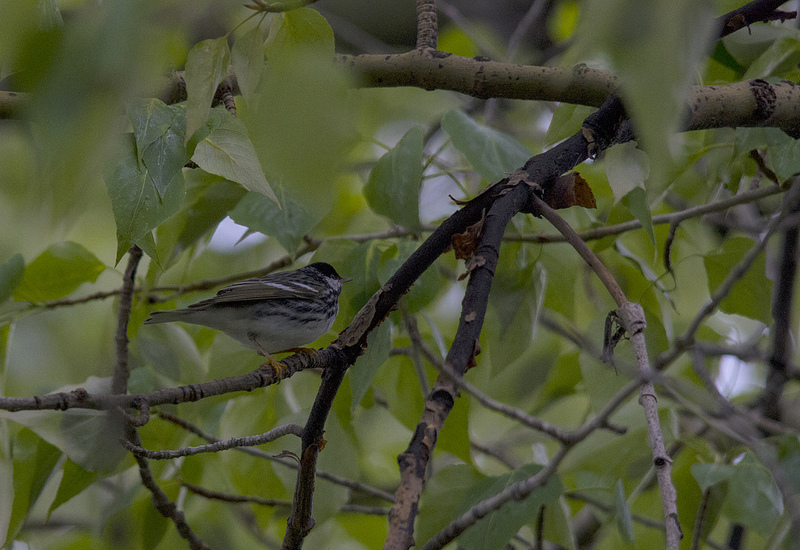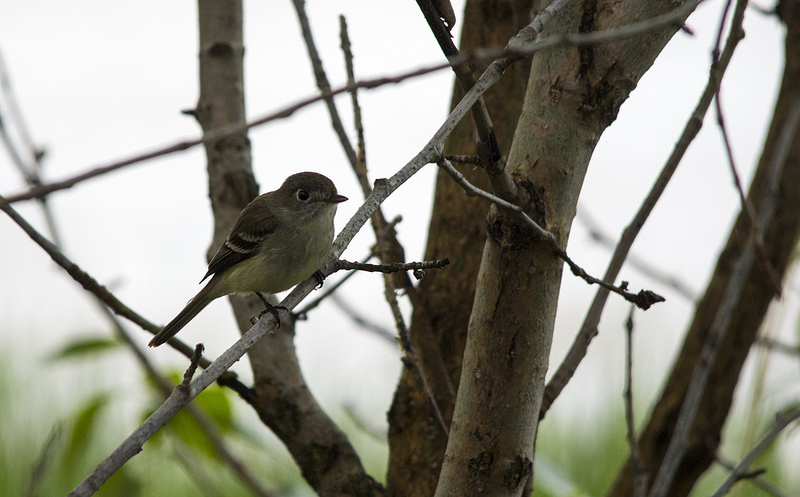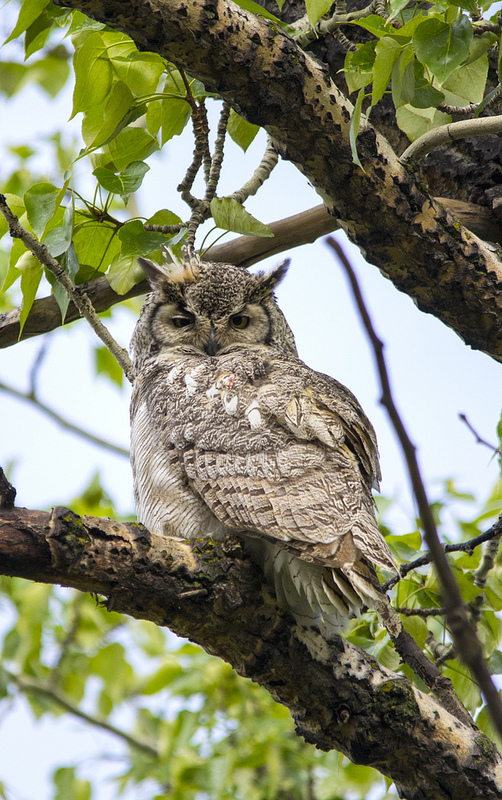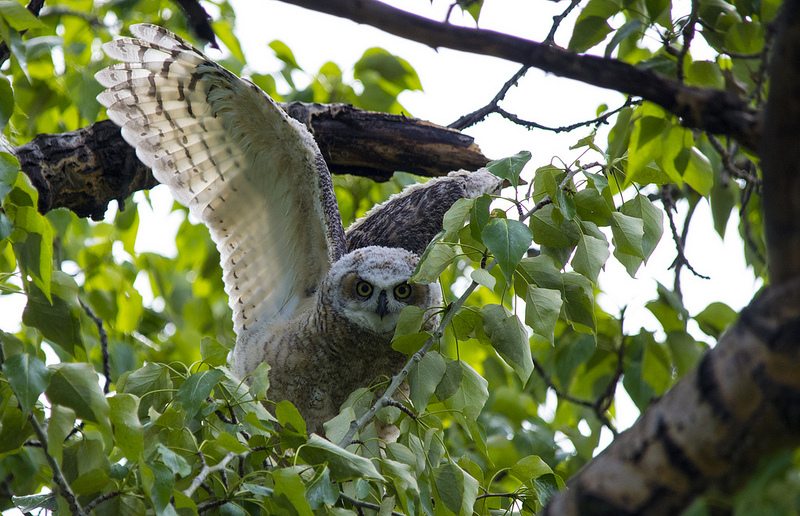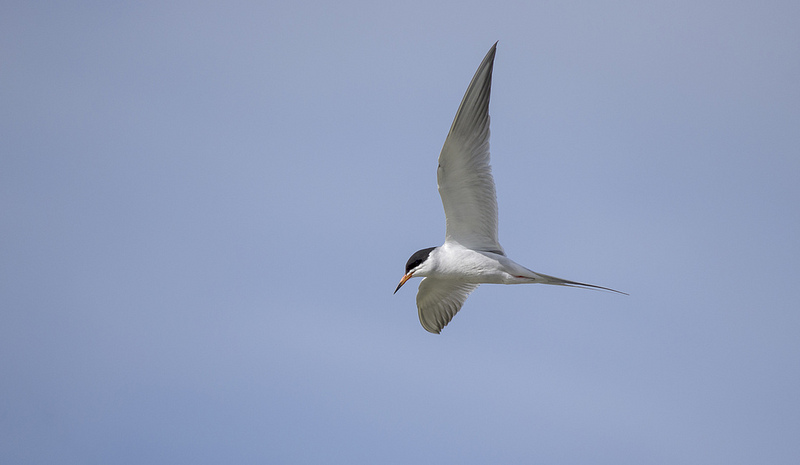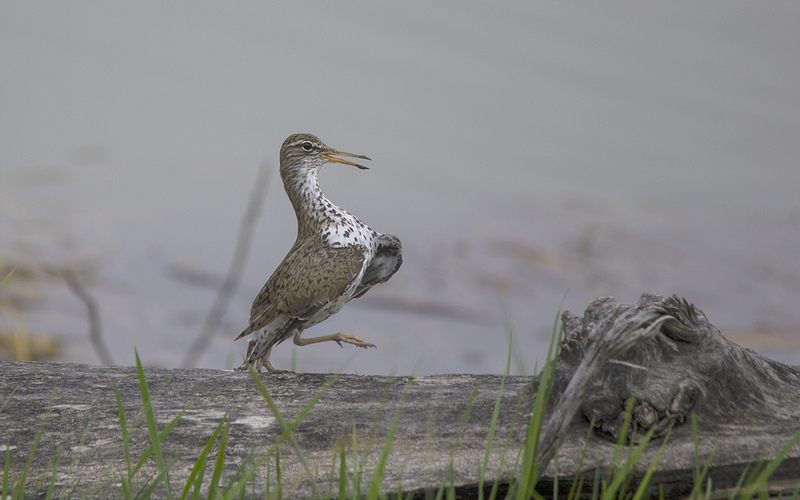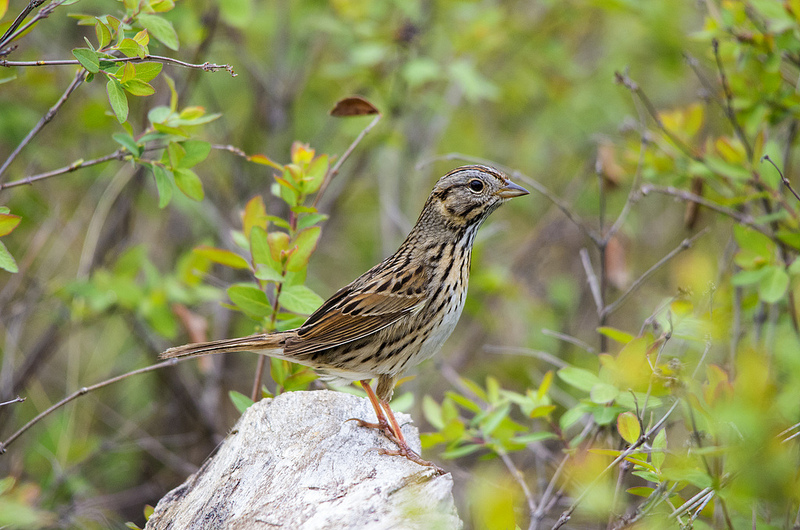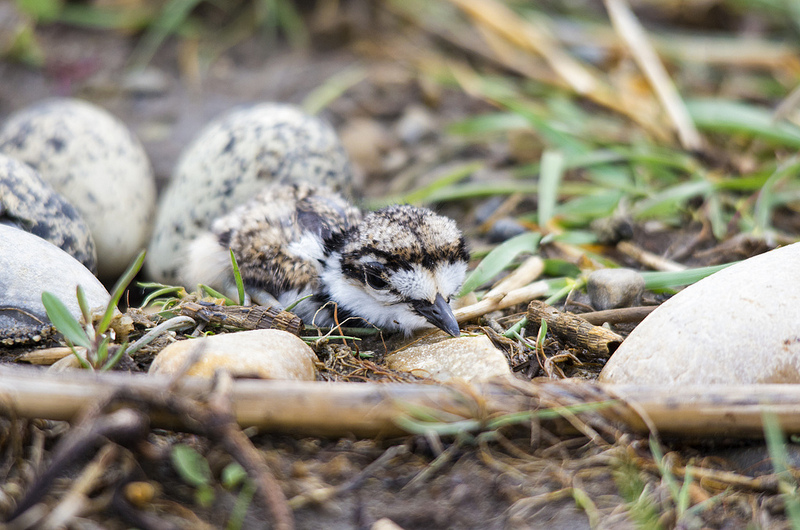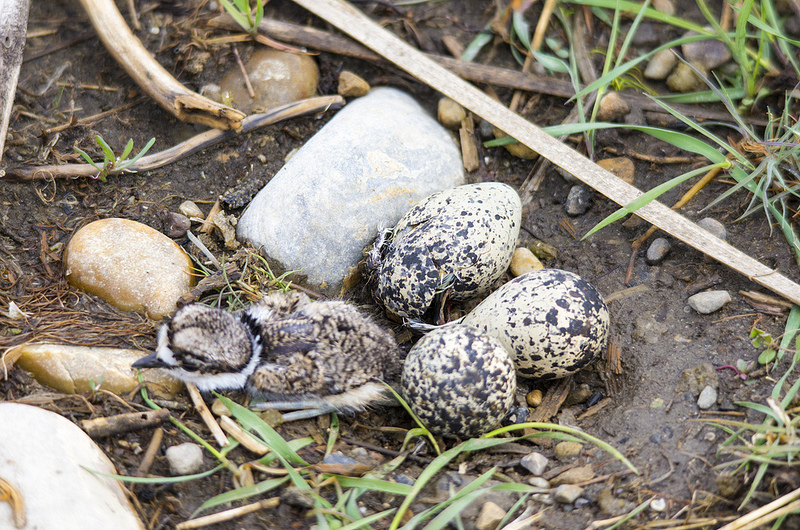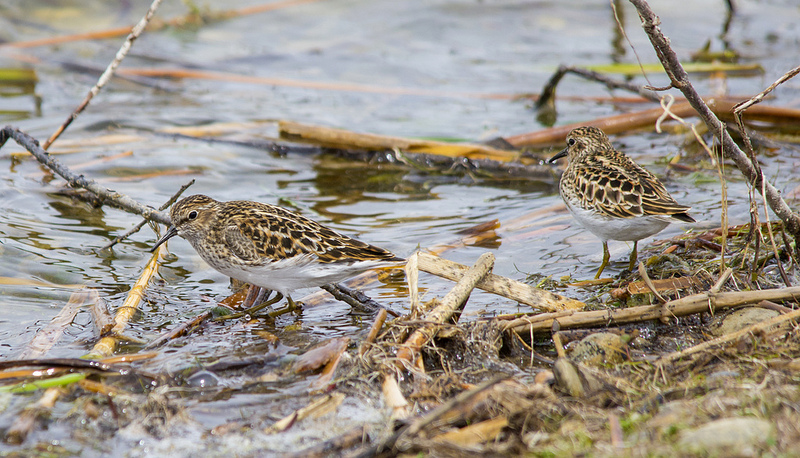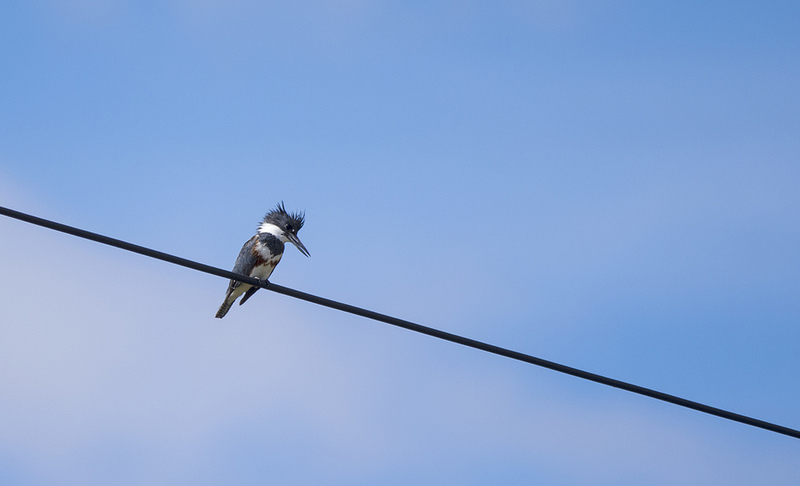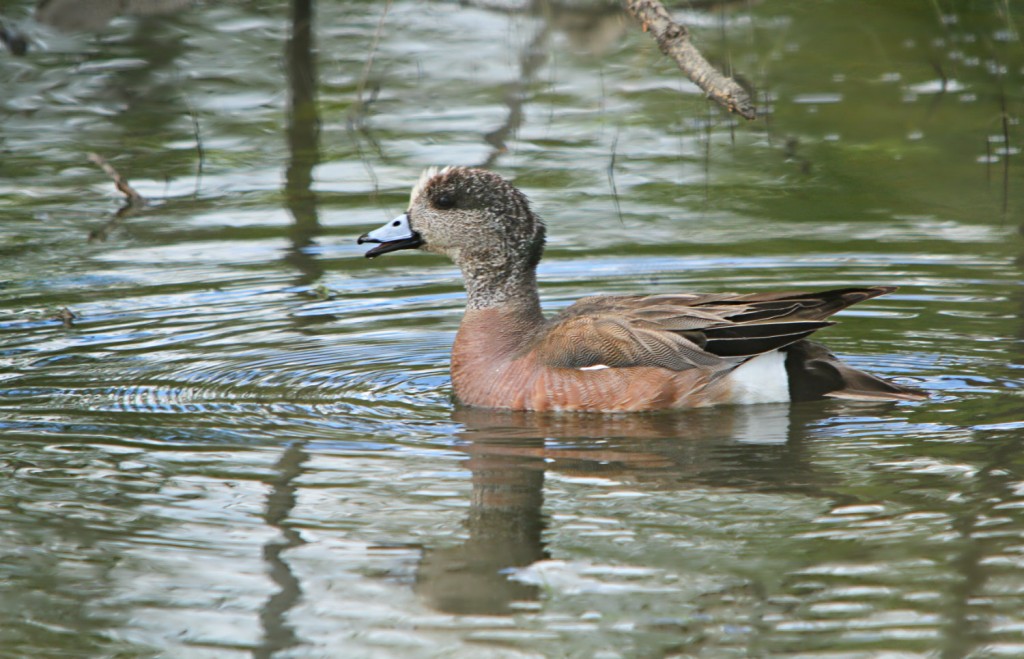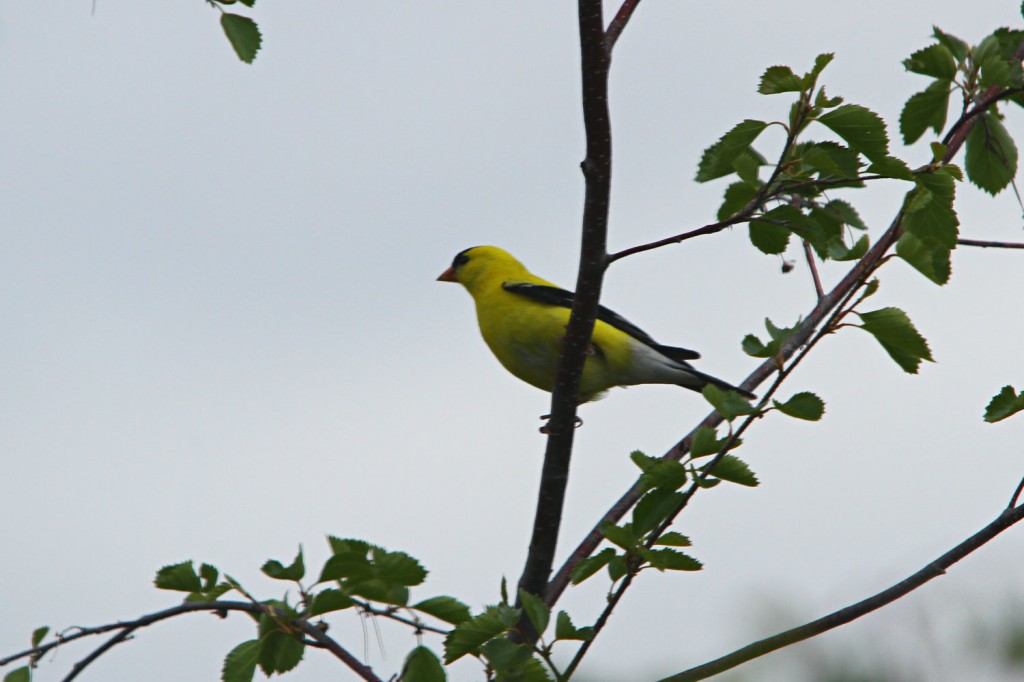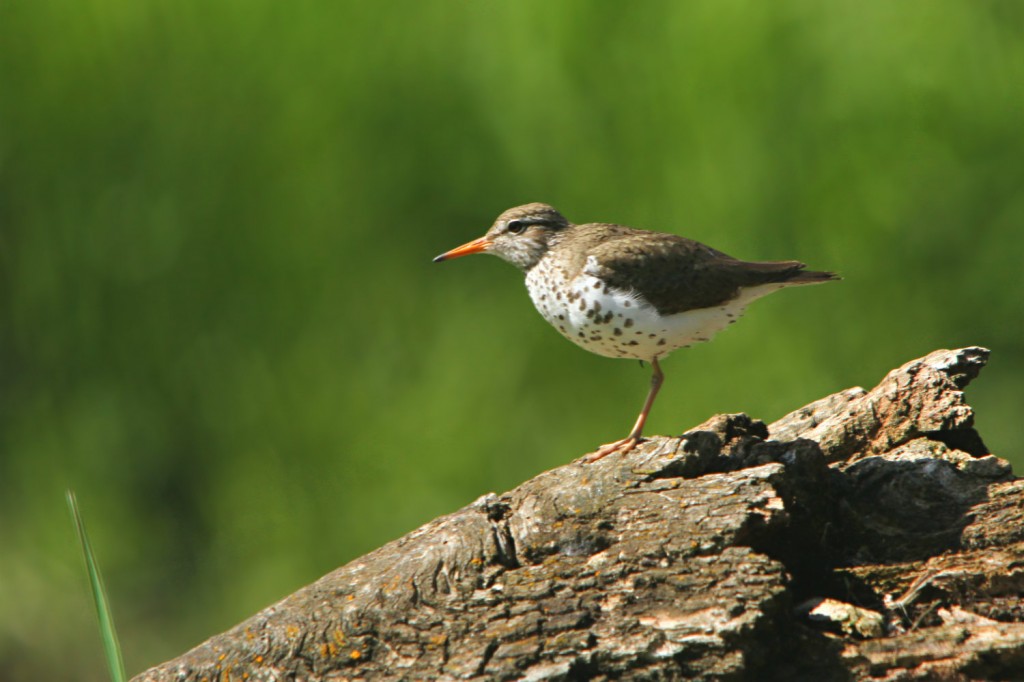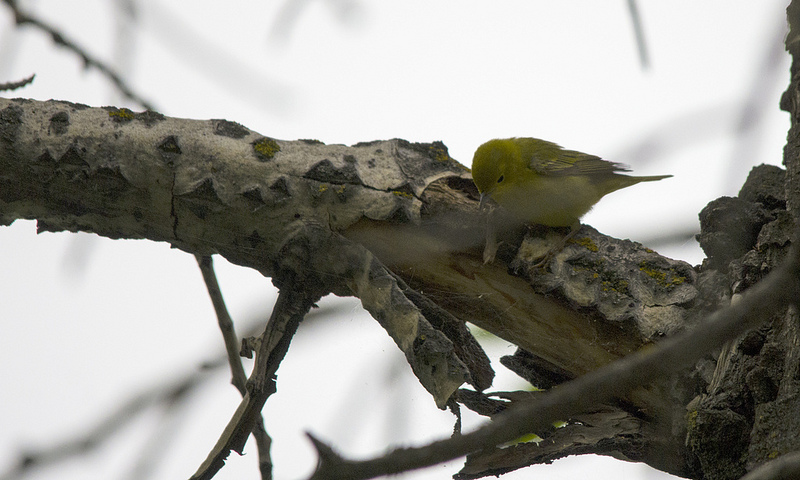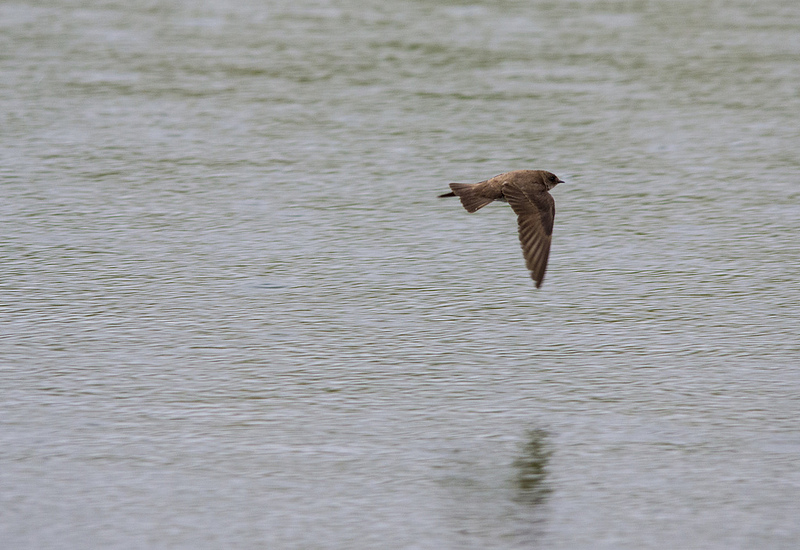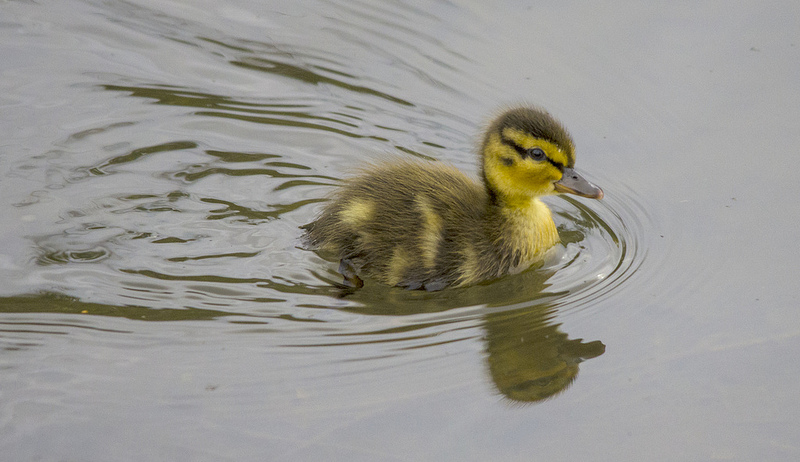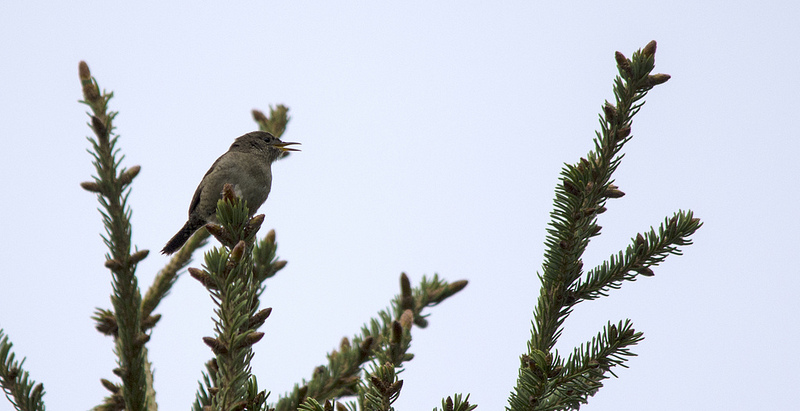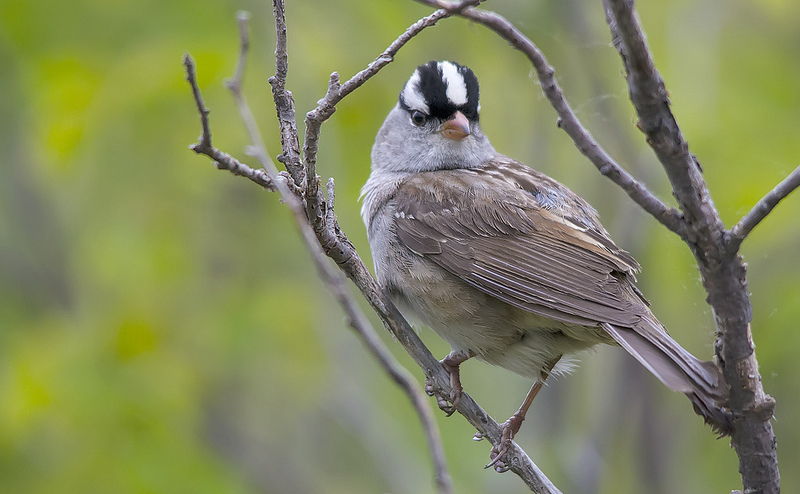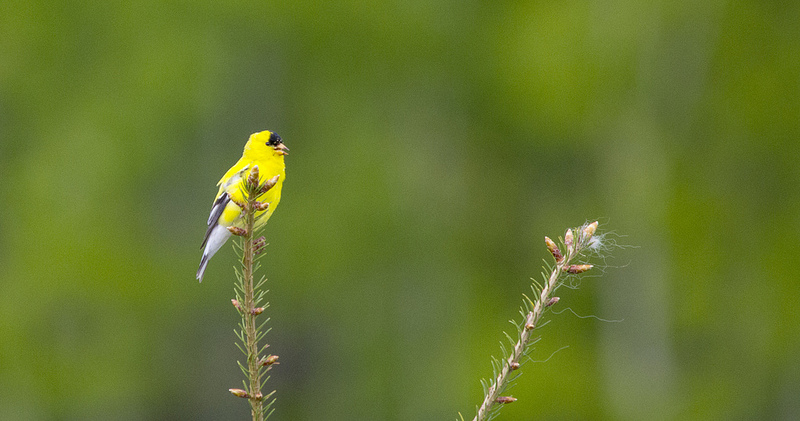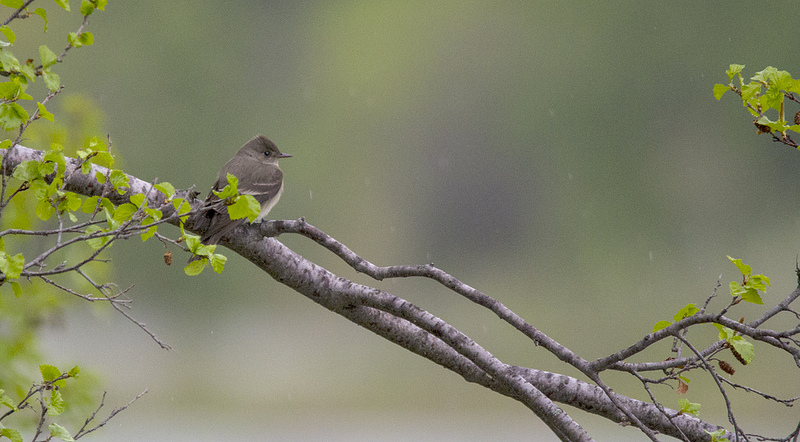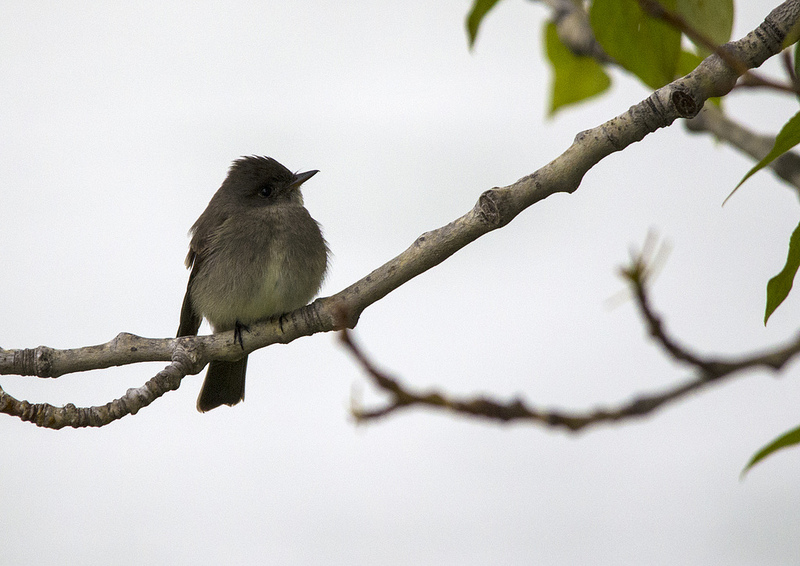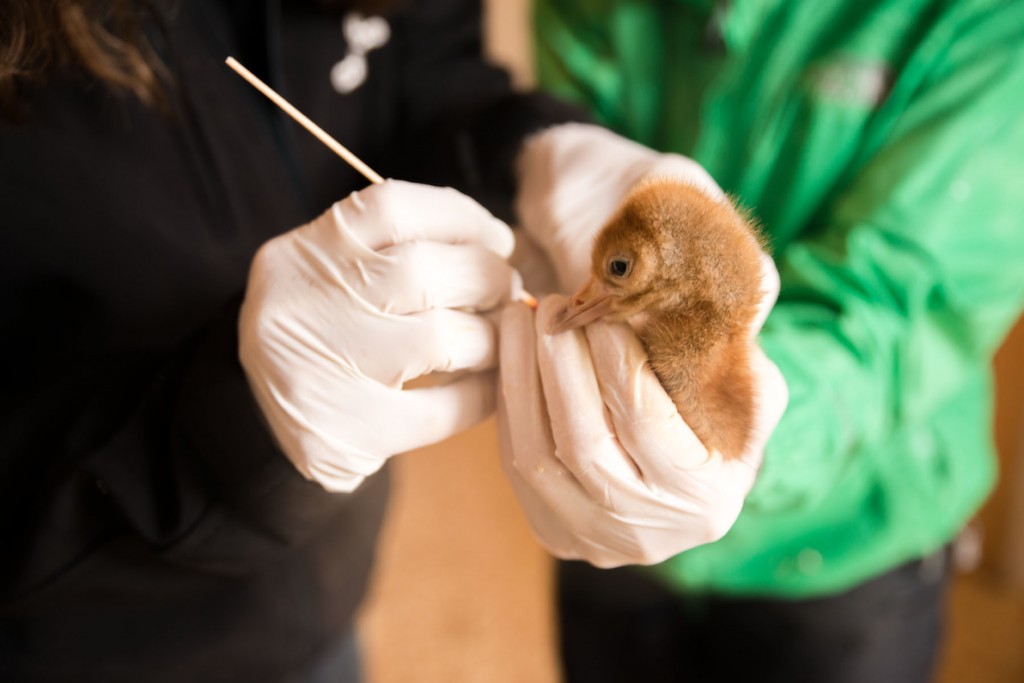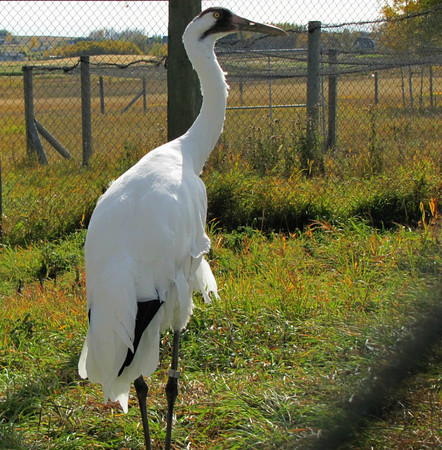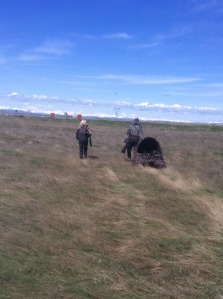We received the following email from a reader, and wanted to pass it along.
May Species Count Highlights – Lafarge Meadows
The May Species Count weekend is always both exciting and exhausting. Early morning wake ups, lots of ground to cover, and lots of birds to find mean there’s little time for anything else. While most participants in Calgary only have one or two areas to cover, between Bob Lefebvre and I, we cover four areas over two days, including the Weaselhead and North Glenmore Park on Sunday morning with the Friends of Fish Creek group, and the last two years we’ve gone on to cover Inglewood Bird Sanctuary and Pearce Estate Park in the afternoon. That wouldn’t be too bad, but the area I cover on Saturday is all walking, and includes the north end of Hull’s Wood all the way south to the south end of Lafarge Meadows. To give you an idea, I covered 18.2 km in 9 hours of walking, and netted 68 species of birds, down a few species from last year, but a few surprises (and even a new life-bird) more than made up for it.
One thing you get to see when you’re out at first light is behaviour that you rarely ever see. For instance, Tree Swallows do forage on the ground as well!
Shortly after this sighting was my lifer for the weekend, this Blackpoll Warbler was one of a flock of four birds foraging near the riverbank. Given that the water level had risen quite a bit in the past few days, I suspect there were a lot of insects climbing the trees to get up above the water level.
For the second year in a row, I’ve come across a fairly uncommon bird within the city limits, and while I only heard it last year, this year I was actually able to observe this Willow Flycatcher building a nest in the same grove I heard it last year. It was nice to get clear looks at it this time around!
Of course the Song Sparrows were plentiful, and apparently fearless in their search for a mate and announcing their territory. I walked within three feet of this little singer as I left the path near his perch.
No trip to the Sikome Lake area would be complete without a visit to the resident Great Horned Owls…
Forster’s Terns were a regular sight over the ponds near Highway 22X this year, while last year they were nowhere to be found.
This Spotted Sandpiper took exception to another male sitting on his log, and charged him in their traditional territorial display.
When you’re out on a long walk like this, eventually you take some of the side trails and start pishing. This Lincoln’s Sparrow reacted quite strongly to my intrusion, and shooed me off.
A couple of the most touching sightings though were the babies. This female Common Goldeneye with her five young in tow was the first group of young that I’d seen in the park this year.
But the most powerful experience I’ve had so far this year was nearly stumbling over this Killdeer nest, with one baby already hatched…
… and another hatching while I stood there in awe.
The last new bird I was able to add to my list for the day was pair of Least Sandpipers, which are fairly uncommon at this pond at the south end of Lafarge Meadows, but with a lack of mudflats outside the city, they were likely just passing through on their way to better feeding grounds further north.
As the day wore on and the morning turned to afternoon, my feet grew tired and I was about ready to pack it in, but not before finding this female Belted Kingfisher hunting over one of the backwater creeks on the west end of Hull’s Wood. It was a great end to a great day!
Sunday Showcase: Calgary Birds
Fish Creek Big Day
Posted by Matthew Sim
So how many species of birds can you find in a single day in Fish Creek P.P.? Last year, I set out to find the answer. I turned up 93 species, 7 short of my goal of 100. This year, I was back out again, trying my luck once more. Once again though, I fell short, managing to find a total of 89 species for the day.
I won’t write up too much here or I could have several pages of notes but I will point out some of the highlights, and of course, low points. Surprising this year was the lack of quite a few species that should have been easy to find. Notably, Osprey, Belted Kingfisher, Ruddy Duck, Tennessee Warbler, Forster’s Tern, Black Tern and Pied-billed Grebe were missing. Some of these were absent due to the (until quite recently), low water levels at the Lafarge Meadows sloughs. I had wondered why there were few birds at the sloughs and Dan helped me out by pointing out the fact that the sloughs had been quite low for the last few weeks, perhaps turning away some species.

While I did have some surprising misses, I also found some good species, including the Brewer’s Blackbird above.
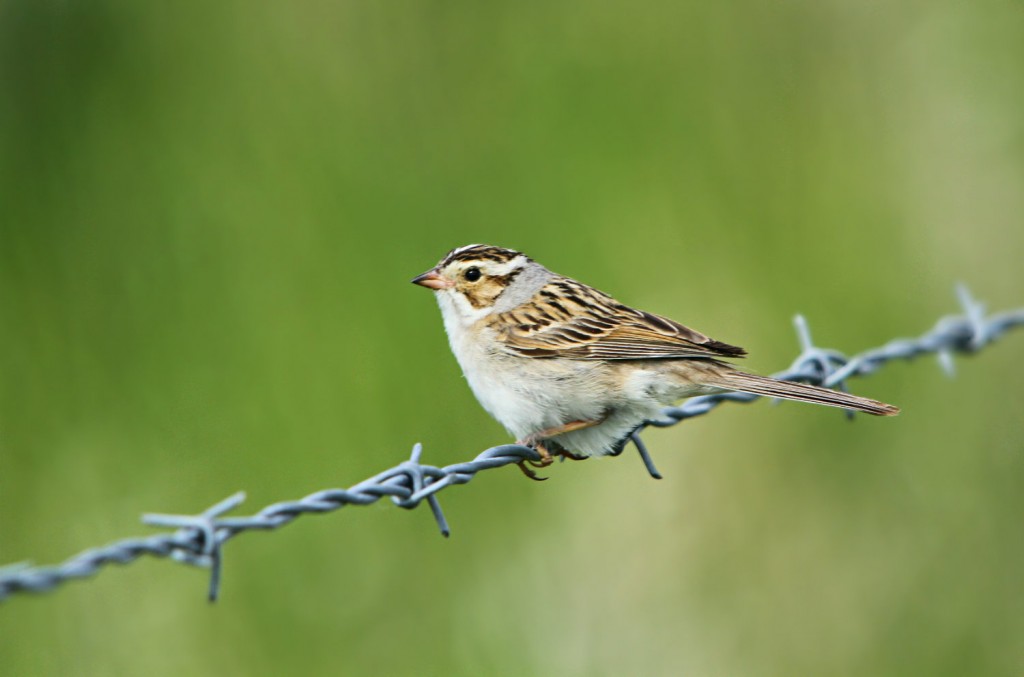
Although some of the common species such as Osprey were absent, most, including the Clay-colored Sparrow above and the American Goldfinch below were relatively easy to find.
Then there were some species that I missed last year but were easy to find this year. I could not find any LeConte’s Sparrows last year but this year I managed to find nearly a dozen. This little guy posed nicely for a few minutes near the Ranch.
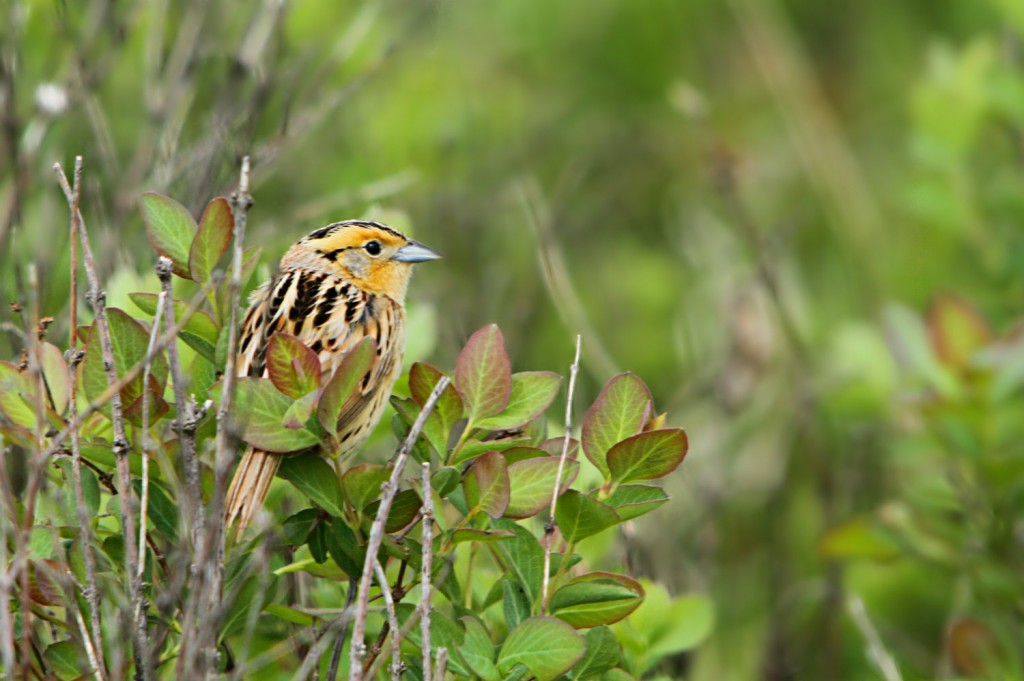
Perhaps I forgot to mention too that it was an early start? I was at the park just before 5, when the songsters were just getting started.
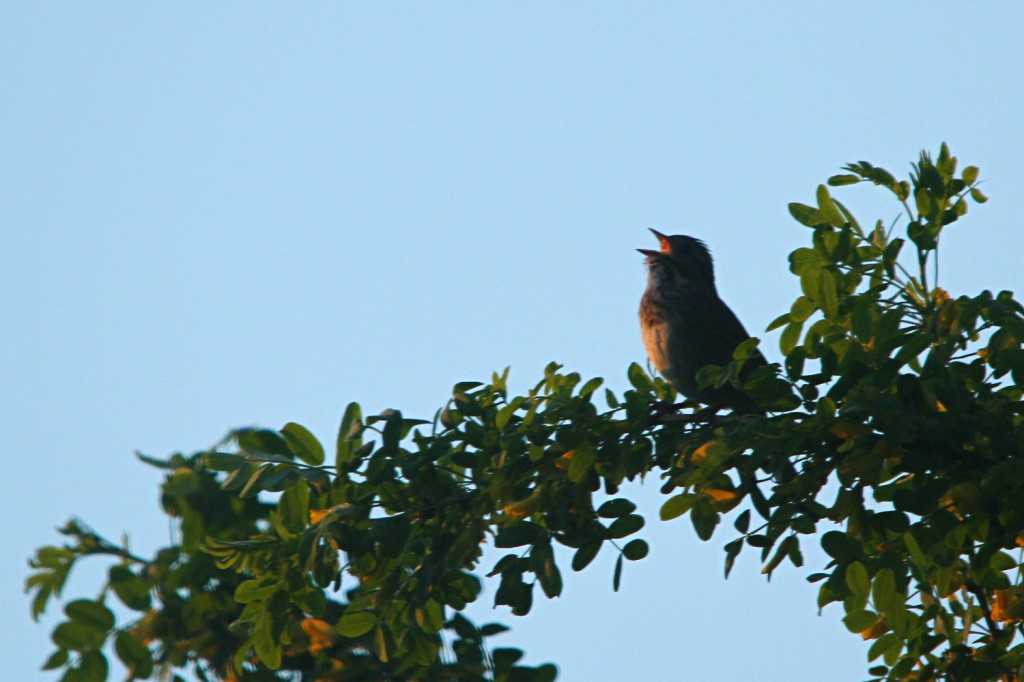
Lincoln’s Sparrow
One of the many birds to be singing early on was the Red-eyed Vireo. These little birds sing nice and loud but can be very tricky to spot. Luckily for me, this one Red-eyed Vireo below sang right from the top of a poplar. So although he was easy to see, he was still a long way up!
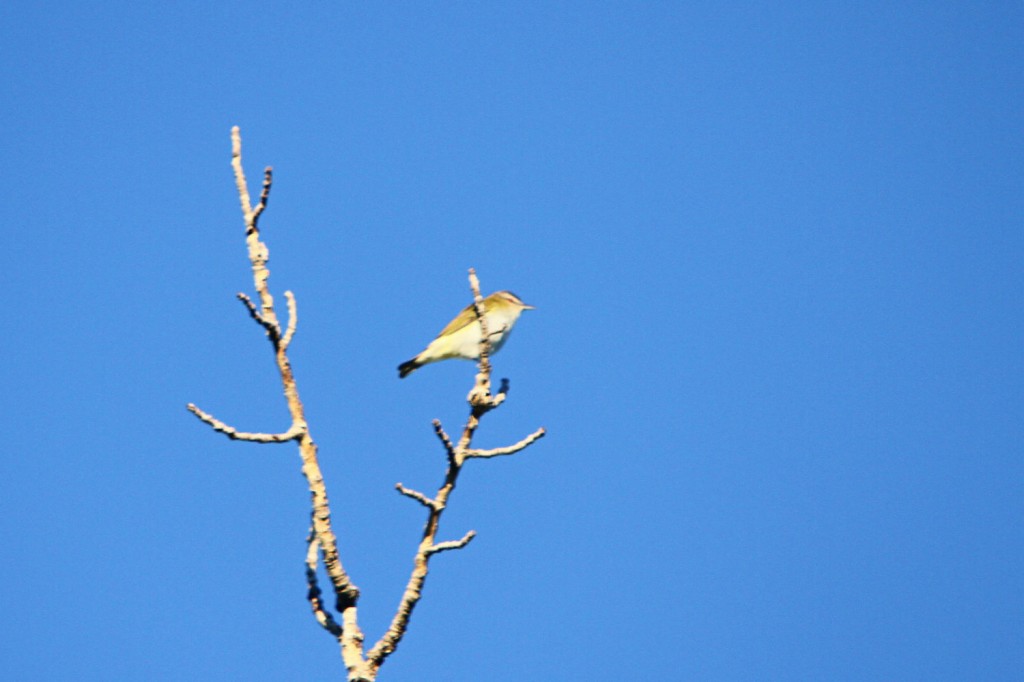
It was a good day and I’m looking forward to doing it again next year. I guess then it will have become the 3rd Annual Fish Creek Big Day…
More surprises and new discoveries in the Weaselhead
While it has only been two weeks since our last visit to the Weaselhead, and only a week since my last post on it, that amount of time can lead to a huge difference in the birds one will see and hear in such a dynamic habitat. In addition to some of the birds we only heard on our last visit, a bunch of new arrivals made for an eventful day. I was thankful for that, because by the time I started with our group at 7:30, I’d already been out in the Weaselhead for almost 4 hours with the Dawn Chorus, listening for birds in the pre-dawn light, and had already accumulated a list of close to 60 species for the day!
A small contingent of six of us decided to visit the Weaselhead again, and while we didn’t expect too much in the way of new birds, we were very pleased with what we did find! One of our first new finds though was a pair of Least Chipmunks rummaging around in the freshly stocked feeders. This one actually sat inside while we watched him snacking on the sunflower seeds.
Looking out over the Elbow River towards the area where the Rufous Hummingbirds are, we spotted this little fellow much closer still, and snapped a few shots. When we confirmed the ID as a Ruby-throated Hummingbird, we edged closer and were able to get some very nice views and photos.
Down the hill we went, checking on the Rufous Hummingbirds, but not before finding a couple of the birds we’d heard well the past few weeks but hadn’t seen. Both the Cedar Waxwings and Gray Catbirds seemed much more comfortable sitting out in the open this week, and both allowed nice photo opportunities.
The old faithful pair of Eastern Phoebes under the wooden bridges in the Weaselhead were both present, but we got our first good looks at the male under the north bridge. After looking the wrong way for him for a few minutes, thought I’d look down over the edge, and sure enough, less than five feet away from me, there he was! Once he knew that I’d seen him though, he flew under the bridge and away from us to continue his hunting for the morning.
As we walked through the meadow where the Calliope Hummingbirds nest, we heard two separate Ruffed Grouses drumming, and as we neared our usual Boreal Chickadee grove, this male was drumming so close to us that I could actually hear the wind whistling through his flight feathers.
Onward and westward we went, staying away from the main pathway as much as possible, as apparently there was a race going on along the main central path… though we didn’t see or hear much in the way of runners. As we neared the pathway though, we did hear this Yellow-bellied Sapsucker calling and tapping on this dead snag… at least when he wasn’t preening himself.
A visit to the south ponds netted the calls of a Sora, a few American Wigeon on the ponds, more Least Flycatchers than one could count, and at least two Rose-breasted Grosbeaks calling from the treetops. This male allowed us a few minutes of viewing before flying off once again.
One notably absent species were the Cliff Swallows. Their nests were empty, and we weren’t the only ones who noticed. This Merlin was sitting near the bridge staring intently down at the nest colony, in hopes of snagging some lunch. He sat there until long after we left, waiting for his lunch “on the wing” to be delivered.
Our last new species of the day was actually one that is generally more evasive than the most secretive birds, but for some reason, this young Thirteen-lined Ground Squirrel was sitting on the ground nibbling away on grass and seeds when we nearly stumbled over it. We could have sat there all morning taking hundreds of photos of it, but this little ground squirrel was completely fearless!
Next week I’ll be away, but I will share some highlights from the May Species Count with you, along with some really great sightings we had at the annual Livingstone Ranch Golf Course bird count! Have a good week, and good birding!
Birding Bowmont Park, rain or shine!
This last Sunday’s walk was once again plagued with the Sunday Morning Curse. While it wasn’t cold or windy, it was interspersed with rain throughout the morning, and during the last twenty minutes or so of our walk the skies opened up and drenched us. Oh yeah, and I didn’t have a rain coat with me either… At least I did manage a few decent pictures of some great new birds of the season for our group!
Early on, we were surprised by this little Orange-crowned Warbler in the budding poplar trees. It was one of the few warblers we saw (or heard) all day that wasn’t a Yellow Warbler!
As we passed one of the small ponds north of the pathway, we spotted a family of Mallards swimming around the edge of the pond, and a little further along found a Bank Swallow nesting colony. These swallows whipped about overhead, snatching insects from the air expertly, then whizzed back to their nest cavities to rest or to feed their mate.
We headed north into the wooded area, and found ourselves at a small pond, where we had good looks at a pair of Gray Catbirds, heard a few Song Sparrows, a lone Lincoln’s Sparrow, and had over a hundred swallows of various types swooping around overhead. We even had a few Northern Rough-winged Swallows feasting on the hatched insects over this pond.
Much to our surprise, we even heard a Common Yellowthroat calling, and while he had no qualms about calling, he certainly didn’t pose very long for any photos!
The star of the pond though were these little Mallard ducklings, peeping and quacking about the pond, but as soon as Mom and Dad landed on the pond, they made a bee-line for them!
After spending quite a bit of time with these little balls of fluff, we finally headed out of the woods and up the river valley slope. While the calls of the House Wrens were ever present, the first one we had good looks at was at the top of a spruce tree at the base of the slope. While it only stuck around for a few shots, the White-crowned Sparrows further up were much more photogenic.
And as we reached the top, the Gray Catbirds seemed to multiply, being seen all around us in every direction we looked. It wasn’t just the Gray Catbirds that popped into view either. American Goldfinches seemed to sprout from every branch like flowers. Take this little gent, for instance.
It was almost too soon, but as the rain began to come down harder, we nearly made a bee-line for the parking lot. We did, however, have time to spot this little Western Wood-Pewee zipping up from the banks of the river to snatch a mosquito or a midge before taking its place back down on the bank, over and over again until it had finally had its fill. They really are quite the adept little predators!
And with that, I’m all caught up and ready for another weekend of new birds as we head back to the Weaselhead in search of more of our many and varied feathered friends. Until next week, good birding!
May Species Count in the Weaselhead
I don’t think I need to mention again how much I love the Weaselhead Natural Area in SW Calgary. This year provided great weather for our Sunday walk, and gave us a bevy of amazing and beautiful birds, with plenty of opportunities to get the very best shots.
As it was part of the May Species Count, our group usually visits the Weaselhead a few weeks ahead of the rest of the Friends of Fish Creek outings, and Bob and I headed out even earlier in hopes of a few of the thrushes singing, and maybe some other early morning birds. We got our wish early on, with this Veery sitting out in the open just south of the first bridge, but sadly were shut out from hearing either the Swainson’s Thrush or Hermit Thrush which can often be found here.
After listening for the other thrushes, and taking our time getting back to the starting point to meet the others, we began our trip again, stopping at the top to listen for various other birds calling, and were lucky enough to see this lone Spotted Towhee singing from the top of a spruce tree just down the hill.
As we descended the hill for the second time, we spotted a few good birds on the way down, plus a bonus mammal, the Least Chipmunk, feeding at the bird feeders mid-way down the hill. At the bottom, we had some not so good views of White-throated Sparrows, but could hear their songs all throughout the morning.
As we reached the bridge, we had nearly three hundred Cliff Swallows flying overhead, and a few even came down to their nests, whether to rest or share food with their mates, I’ll never know. What I do know is that photographing swallows in general is one of the truest tests of a bird photographer. Thankfully, out of nearly fifty shots of the colony, I found one that turned out relatively ok!
We followed the pathway all the way to its end at the southern edge of the Weaselhead, and turned up good numbers of Yellow Warblers, and some of the first Least Flycatchers of the year, which could be heard all through the park with their distinctive “chi-bec” calls. Thankfully they’re also one of the easiest to identify by sight as well as sound, with their distinct thick eye-ring and buffy sides.
Down at the very south end, we heard the calls of a Northern Waterthrush, more Yellow Warblers than we could ever want for, and even a pair of elusive Sora. Hopefully the next time we see them they’ll be more cooperative for the camera!
We began the long trip back through the central portion of the Weaselhead, hearing our first Rose-breasted Grosbeak of the year, along with Red-breasted Nuthatches, Boreal Chickadees, and White-winged Crossbills, but the main reason for revisiting the central meadow was for the Calliope Hummingbirds who are annual residents here, and this year this male put on quite a show for us.
Once we’d had our fill of watching this hummingbirds antics, we headed to the north side of the Elbow River in search of the other regular hummingbird species here, the Rufous Hummingbird. Once again, we were not disappointed as we found a single male high up in a spruce tree, and even were lucky enough to watch as he faced off with another male in a territorial dispute. Here is the champion flaring his gorget in victory.
As we were preparing to leave for the next few stops along our May Species Count route, we were given a low and slow flyby by a male dark morph Swainson’s Hawk that’s been resident here in the Weaselhead for a few years.
And that’s it for another week of birding for us. With last weekend’s May Species Count, and the weeks crazy schedule, I missed my regular post last week, so this week you get two (at least!) new posts from me. Watch for the next one on Thursday! Until then, good birding!
Sunday Showcase: Sandhill Cranes
Rob English was lucky enough to come across these Sandhill Cranes northwest of Cochrane. He says “the male sure put a run on those geese. These two cranes were very co-operative as at one point they walked out of the marsh on to the road while I was hiding in the bushes. They finally had enough of me and flew. A real experience!”
Whooping Crane Birth
A whooping crane egg has hatched at the Calgary Zoo’s Devonian Wildlife Conservation Centre near Dewinton. Although every year fertile eggs are sent to recovery partners in the U.S., this is the first chick to hatch at the zoo’s breeding facility in the last three years.
“The whooping crane chick is doing extremely well,” said area curator, Colleen Baird. “It is strong and showing signs of healthy development.”
This chick hatched from a total of six fertile eggs that the whooping cranes laid this year at the Centre. Five eggs will be sent to other facilities in North America to continue to supplement wild whooping crane populations. There are seven breeding pairs of whooping cranes at the Centre and one non-breeding pair on display at the zoo.
As the chick matures, the zoo’s animal care team will determine if it will be part of the ongoing whooping crane breeding program at the Centre or if it will be relocated to be a part of other breeding programs.
Whooping cranes are currently listed as endangered on the IUCN Red List and are one of three bird species in Canada in that category. Through the efforts of the Devonian Wildlife Conservation Centre, the Calgary Zoo is helping to ensure the long term survival of the species through participating in the conservation breeding program and species reintroduction efforts.
Frank Lake Ibis Colony Destroyed?
Guest Post by Greg Wagner
Ducks Unlimited developed the Frank Lake project under the North American Waterfowl Management Plan which is a tripartite initiative between Canada, the United States and Mexico aimed at conserving migratory birds across the continent. The Plan’s goal is to return waterfowl populations to 1970s levels through the protection of upland and wetland habitat.
This has certainly been achieved at Frank Lake where upland habitats have been secured and are managed for nesting waterfowl and other birds, and where wetland habitat has been created and protected through the establishment of dams and the addition of tertiary treated effluent from the Town of High River and Cargill. It is also one of the few large wetlands with large cattail and/or bulrush beds in southern Alberta and attracts a number of breeding bird species that are dependent on these habitats including White-faced Ibis, Black-crowned Night Heron, Franklin’s Gull, Forester’s Tern, Western Grebe and Eared Grebe. Many of these species are listed as sensitive under the General Status of Alberta Wildlife Species, largely because of the scarcity of large wetlands with emergent vegetation.
Because of its conservation importance, Frank Lake has also been identified as an Important Bird Area and as an Environmentally Significant Area within the Municipal District of Foothills.
Frank Lake is also a popular area for hunting, birding, wildlife photography, dog walking and hunting dog trials. Ducks Unlimited has also established an educational program at the lake, which had initially been offered to students in Calgary schools, but which is now being offered to rural schools in the area. It truly is the goose that laid the golden egg. If people show some respect for the area and following a few basic rules (eg., dogs on leash during the nesting period from 1 April to 1 July) it should remain as an area that can serve as a significant wildlife conservation area, and at the same time be enjoyed by a number of different user groups.
The best known and most heavily used site on the lake is the observation blind on Basin 1 in the northwest corner of the lake. It is located within an extensive bulrush marsh and provides excellent viewing opportunities of Eared Grebe, Coots, Ruddy Ducks, Blackbirds and Marsh Wrens. Looking out to the east you can count dozens if not hundreds of White-faced Ibis. During the spring, the calls of Franklin’s Gulls are deafening. This reed bed supports the largest breeding population of emergent dependent birds on the lake, and in the province.
In the past photographers have been observed wading through the reed bed near the blind and trying to get close to the reed bed and nesting area of White-faced Ibis on a crudely constructed raft. These individuals cause untold damage to the birds nesting in these areas, in violation of the federal Migratory Bird Convention Act and the Alberta Wildlife Act. I few weeks back I raised my concerns with the local Fish and Wildlife Officer.
Unfortunately, last weekend I encountered two individuals (a man with graying hair and a women with long blonde hair) marching through the reed beds north of the blind, cameras and long lenses in hand and pulling an inner tube with camouflage material wrapped around it. They were right in the area where the Ibis and Night Herons nest. About 25 Black-crowned Night Herons were flying around the reeds at the time.
I yelled at them to get out of there and that they were destroying nests in violation of the Alberta Wildlife Act. I also phoned Report a Poacher 1-800-642-3800 and ended up speaking with the local Fish and Wildlife Officer I had met with a few weeks back. I indicated what these two people were doing and that they were disturbing nesting birds in violation of the Migratory Bird Convention Act and the Alberta Wildlife Act. He asked me to record their license plate number. I also took some photos of them in the reeds.
After about twenty minutes they came out ashore and had the pleasure of some lively conversation and in your face time with yours truly. They indicated that they were long-time birders and were doing nothing to disturb the birds. I have left the matter in the hands of the Fish and Wildlife Officer. But I wonder, do these two pick up a couple of six packs of mice from their local pet store anytime the go out looking for owls?
Last spring, I watched the Franklin’s Gull return to Frank Lake and begin nesting over most of May. Unfortunately, I was away for most of June. When I got back, I visited another large reed bed marsh supporting a large Franklin’s Gull breeding colony. The place was deafening with adult birds circling overhead, and recently fledged young everywhere.
Frank Lake was much different. I only saw a flock of 20 birds heading to the lake from nearby fields. No adult birds circling over the reed beds and no recently fledged young. There was zero nest success. I wondered at the time what had happen, and probably will never know. I thought it was probably something environmental, a quick increase in lake levels following a major rainfall event. But now, I wonder if it may simply have been caused by photographers traipsing through the bulrushes.
Frank Lake has become widely known as being the home to White-faced Ibis. I fear the breeding colony, or at least the major colony of the lake, has been destroyed. So if someone is out at Frank Lake and wants to know why there aren’t so many Franklin’s Gulls around the blind, or where all the Ibis have gone. maybe this post provides an answer.
—————————
Posted by Pat Bumstead:
We know Frank Lake is a very popular birding destination for many of our readers. Put the Report A Poacher number 1-800-642-3800 in your cellphone. If you see idiot photographers endangering the birds for the sake of a picture, make note of the following and give them a call:
- Date, time and location of offense
- License plate number of vehicle
- Vehicle description, including any identifying features, dents, stickers, etc.
- Description of person(s) involved
- Description of evidence at the scene, or evidence of the crime that the violators took with them
- Details of the violation
Most of our Canadian bird species are in serious trouble throughout their ranges. Bird watchers are the ones out in the field, and can cover far more territory than Fish & Wildlife officers. If you see someone wading through nest sites, baiting owls, stealing eggs from a nest or anything else that threatens the birds, speak up for them! If we don’t, there might not be any birds to watch.

